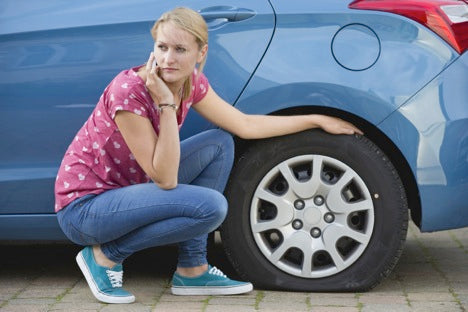What is the real reason new cars do not have spare wheels?

The trend of new cars not including spare wheels / Spare Tyre —often replaced by tire repair kits or run-flat tires—stems from a combination of practical, economic, and design factors rather than a single "real reason." Manufacturers have been phasing out traditional spare tires over the past couple of decades, and here’s why:
- Weight and Fuel Efficiency: A spare tire, jack, and tools add roughly 20-40 pounds (9-18 kg) to a vehicle’s weight. Carmakers are obsessed with reducing weight to meet stringent fuel economy and emissions standards (like CAFE in the U.S. or EU CO2 targets). Ditching the spare improves miles per gallon or extends electric vehicle range, even if just by a small margin.
- Cost Savings: Producing and including a spare tire costs money—about $50-$100 per car, depending on the vehicle. For manufacturers pumping out millions of units annually, that adds up fast. Tire repair kits (sealant and a compressor) are cheaper, often costing under $30 to include.
- Space Optimization: Modern car designs prioritize interior room and cargo space. A spare tire well eats into trunk volume or forces compromises elsewhere, like in battery placement for hybrids and EVs. Repair kits or run-flat tires free up that real estate for storage or tech.
- Tire Technology Improvements: Run-flat tires, which can go 50-100 miles at reduced speed after a puncture, and better tire durability mean flats are less of a death sentence than they were decades ago. Manufacturers argue that these advancements reduce the need for a spare. Repair kits also handle most common punctures (small holes up to 5mm), which are the majority of tire issues.
- Consumer Behavior: Data shows many drivers don’t even use spares when they have them—AAA reports that 60% of Americans haven’t changed a tire in the last decade. Roadside assistance and mobile tire services are more convenient, especially with smartphone apps. Carmakers lean on this, betting you’ll call for help instead of wrestling with a jack.
- Regulatory Loopholes: In most places (like the U.S.), there’s no legal requirement to include a spare tire. It’s optional equipment, so manufacturers can cut it without breaking laws, unlike seat belts or airbags.
That said, it’s not all rosy. Critics point out that repair kits fail on big punctures or sidewall damage (up to 30% of flat tire cases), and run-flats are pricey to replace—often $700-$900 each—plus they wear out faster. Some X posts I’ve seen complain about getting stranded in rural areas with no cell service, where a spare would’ve saved the day. Web searches back this up: forums like Reddit’s r/cars and articles from Motor Trend (circa 2023) highlight owner frustration, especially with EVs like Teslas that lean hard into “no spare” designs.
So, the "real reason"? It’s a calculated trade-off: manufacturers save money and hit efficiency targets while betting on tech and roadside help to cover most scenarios. Whether that’s a net win for drivers depends on where you live and how much you trust a can of goo over a good old donut tire.
All this said purchasing a Spare wheel to carry along for long journeys does make sense as Roadside Assistance is sparse in both Australia and NZ.





